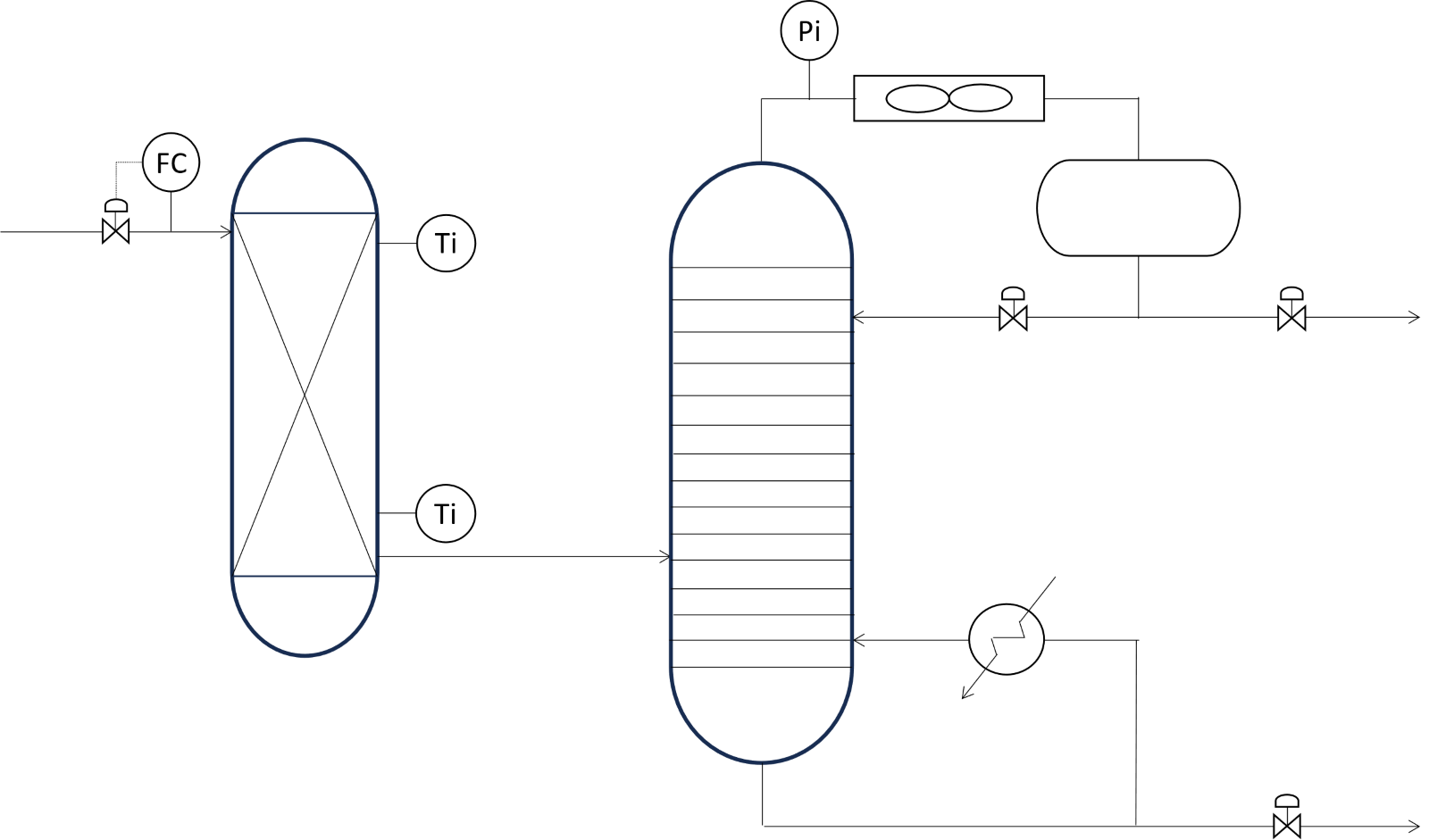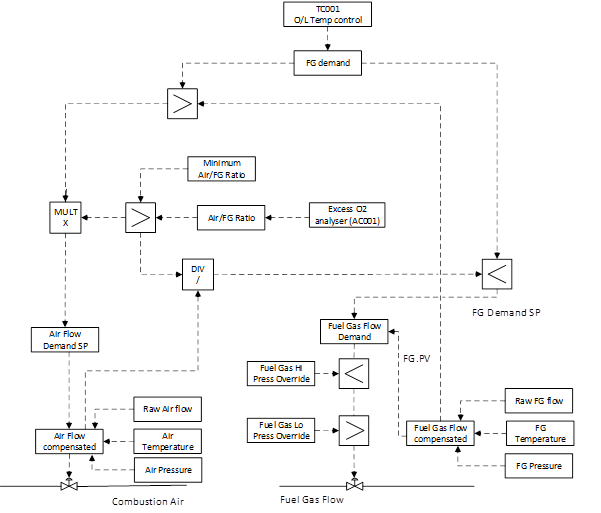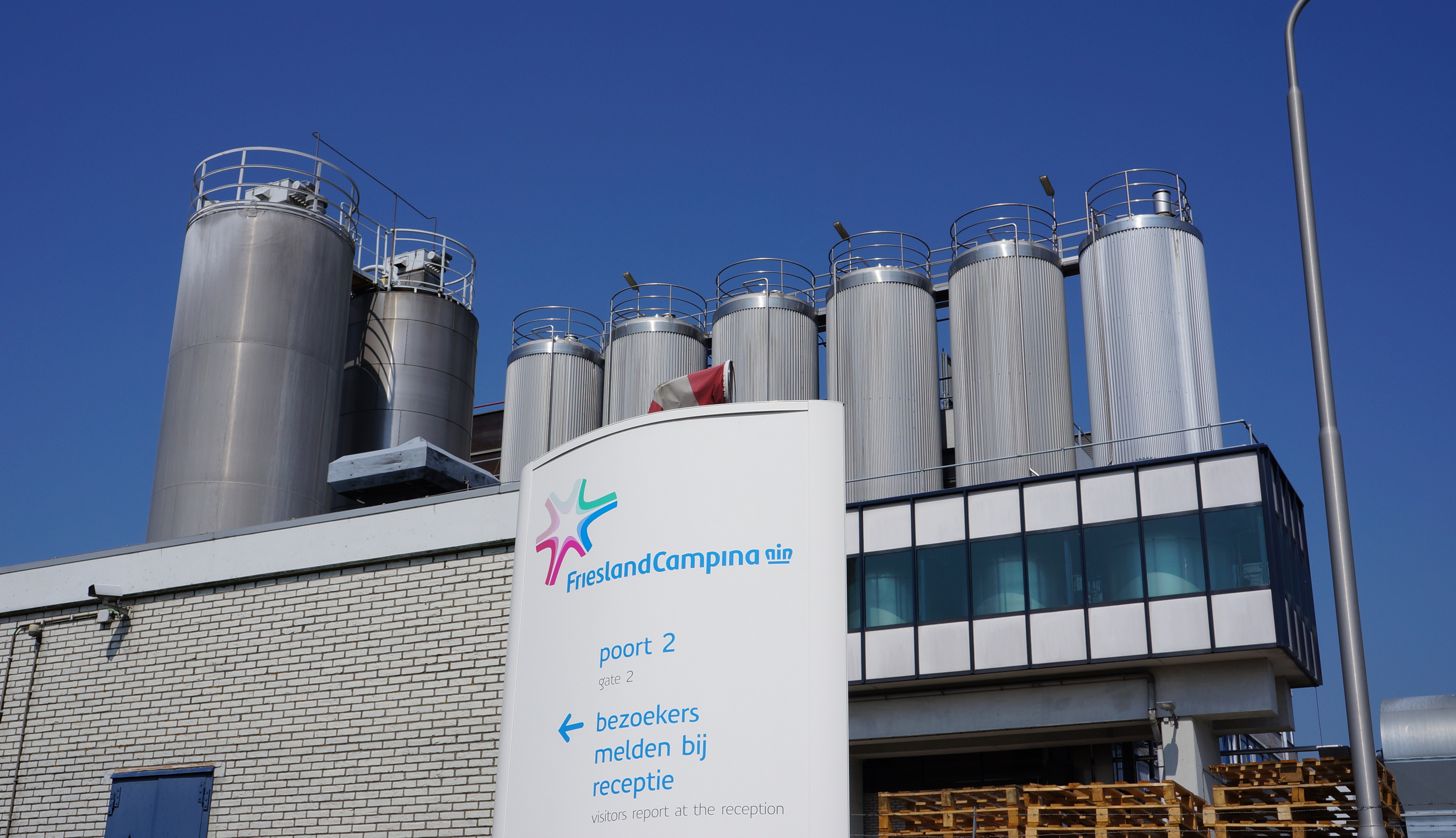In the blog post “Intermediate Variables in APC”, it was explained how Advanced Process Control (APC) applications can benefit from the use of intermediate variables. In this second blog, further potential for improvement is presented. If the concept of intermediate variables is new to you, check the previous blog first.
Advanced Process Control (APC) applications rely on models that accurately describe the process behaviour. The modelled response of one or more controlled variables (CVs) to a setpoint change in a manipulated variable (MV) is used to predict these CVs over the prediction horizon. The prediction horizon is usually several hours. Next, optimal setpoint moves are calculated for manipulated variables and a feedback mechanism ensures that the predictions stay in tune with reality.
Cross-limiting Control is implemented, what’s next?
The cross-limiting control schemes are utilized in furnaces to ensure the airflow never goes below the safe limit. These control schemes are designed so that whenever there is an increase in demand for fuel gas, the airflow will lead fuel gas flow, and in the case of a decrease in fuel gas demand, the airflow will lag the fuel gas flow.
Topics: PID tuning, Plant performance, Advanced Process Control
Every DCS has its own set of PID loop equations. A Honeywell Experion DCS features 5 different equations and an Emerson Delta-V DCS can even offer 7 equations. Each equation implies a different formulation of the PID control algorithm. So, each equation might require different tuning parameters to obtain the same or similar closed-loop behaviour. Many control engineers ignore the equation type of a PID loop. Even if you have tuned many different loops, you might not be able to obtain the desired closed-loop performance if you don’t have the right equation selected.
Topics: PID tuning, Plant performance
PID tuning: A low cost way to boost process performance
As a production manager, you have one main goal: optimal and stable operations. You need to reach your production targets while taking care of the plant’s efficiency and safety. Optimal functioning of the entire production process in its broadest sense — achieving objectives for safety, quality, quantity, costs, environmental impact and reliability — is your responsibility. A low cost way t boost process performance therefore may seem like the holy grail.
In this blog, we'll describe 6 ways how PID Tuning boosts plant performance. Are you curious about this holy grail yet?
Topics: PID tuning, Plant performance
On demand webinar: Sustained Control Performance Monitoring
Bringing PID control performance to the highest level is a challenge, but keeping the performance high is a different game. In this blog, you’ll read reasons for degrading PID control performance and the various ways in which our customers take on the challenge of sustaining control performance monitoring. You’ll also read what to expect from the webinar “PID sustained control performance”: how to get to a high control performance monitoring and how to keep the performance up, including some practical cases.
Topics: PID tuning, Plant performance
FrieslandCampina - Increased productivity with INCATools PID tuner
For FrieslandCampina, improving work processes on plant sites is an ongoing course of action. Therefore, it’s fundamental to be aware of possible shortcomings and growth potential of these processes. They decided to implement INCATools PID tuner, a tool that matched the technical criteria and scored high on usability because of the integrated roadmap. Read in this blog why FrieslandCampina needed to change course and what benefits the software offered.
Topics: PID tuning, Plant performance
It’s no secret that well-tuned PID loops contribute to a stable and healthy plant. Once optimally tuned, only critical PID loops that cause too many alarms tend to be tuned again. Underperforming loops are often ignored. But if you frequently analyze all your PID loops you can enhance total efficiency, have less wear and tear, more overall stability, and fewer operator interventions. Read in this blog why it is essential to monitor your PID’s and how to perform monitoring most cost-effectively.
Topics: PID tuning, PID software, Plant performance
It's no secret that proper PID tuning will contribute to a stable plant with fewer variations and fluctuations. Optimal and stable operations are the ultimate goal. This can result in several percentages of extra throughput and several percentages reduction of specific energy consumption. Additional throughput is highly desired in high market conditions, while the specific energy consumption might be more interesting when selling prices are low and energy prices high. In all cases, more stability results in fewer alarms and fewer operator interventions.
In this blog, you will learn why PID tuning improves process performance and how to accomplish this technical result of PID tuning.
Topics: PID tuning, PID software, Plant performance





.jpg)
.jpg)

.jpg)


